MANUFACTURING HIGH-ENTROPY ALLOYS
OUTCOMES
KEY RECOMMENDATIONS
In line with MForesight’s mission of providing coordinated input from the manufacturing community to inform national priorities in advanced manufacturing, the advanced manufacturing community found four clear and actionable recommendations for boosting U.S. competitiveness in HEA manufacturing:
1. Invest in critical translational research for HEA manufacturing, from the earliest alloy identification to processes enabling final part production. HEA processing technologies need to be developed past the prototype stage to enable scalable manufacturing.
2. Establish a National Testing Center for HEAs focused on high-throughput testing to enable rapid discovery, testing, and validation of HEAs and manufacturing processes.
3. Develop a central database for HEA data to minimize duplicative efforts and accelerate innovations by U.S. researchers and manufacturers.
4. Enhance collaborative efforts through increased access to federal facilities and expertise and through the establishment of an interdisciplinary working group. Leveraging and aligning existing federal resources and efforts are essential to HEA manufacturing progress.

DISSEMINATION
The real value of this work comes through the dissemination of the key recommendations identified by the advanced manufacturing community represented at the workshop. The report and summary have been shared with public and private sector stakeholders. Specifically, MForesight published A Call to Action: Manufacturing High-Entropy Alloys in the Journal of Materials Research, hosted federal agency briefings at the Department of Defense and Department of Energy, and highlighted the report in the following briefing on Capitol Hill.
Capitol Hill Briefing: Next Generation Materials for Manufacturing Competitiveness
October 3, 2018
10:30 am
2020 Rayburn House Office Building
Hosted in conjunction with the House Manufacturing Caucus
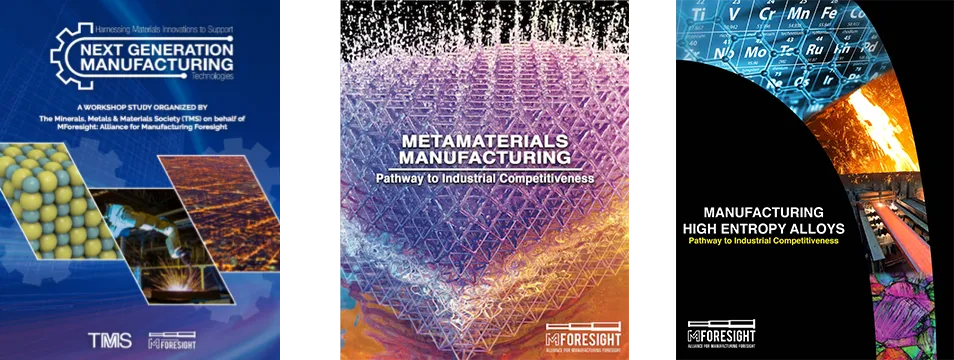
Manufacturing is a cornerstone of the U.S. economy and it is imperative that U.S. manufacturing remains competitive and capitalize on areas for growth and innovation. Breakthroughs in new materials technologies are a critical component of the technological advances needed to bolster next generation manufacturing in the United States. Materials technologies are involved at every step within the manufacturing process chain from novel feedstocks to shaping technologies, to advanced sensors, and ultimately, to high performing products.
Driven by insights from the U.S. advanced manufacturing community, this briefing explored some of the most promising materials innovations that could enable the next wave of manufacturing technologies as highlighted in the MForesight report, Harnessing Materials Innovations to Support Next Generation Manufacturing Technologies. The briefing highlighted two promising technologies, Metamaterials and High-Entropy Alloys, and explored pathways to support industrial competitiveness based on the collective voice of manufacturers, government agencies, and leading research institutions.
Speakers included:
Sridhar Kota, Executive Director,MForesightEd
Edward Herderick, Director of Additive Manufacturing, Center for Design and Manufacturing Excellence,The Ohio State University
Chris Spadaccini, Director of the Center for Engineered Materials and Manufacturing, Lawrence Livermore National Laboratory
Dan Miracle, Chief Scientist (Acting), Air Force Office of Scientific Research, Air Force Research Laboratory
KEYNOTE SPEAKER & STEERING COMMUNITY
KEYNOTE SPEAKER
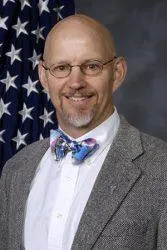
Daniel Miracle, Senior Scientist, Air Force Research Laboratory, Materials and Manufacturing Directorate
Dr. Dan Miracle, a member of the scientific and technical cadre of senior executives, is the Senior Scientist, Materials for Micro and Nano Systems, Materials and Manufacturing Directorate, Air Force Research Laboratory, Air Force Materiel Command, Wright-Patterson Air Force Base, Ohio. He shares responsibility to define, advocate, and implement a strategic vision for nanoscience and technology within the Materials and Manufacturing Directorate and across the directorates in the AFRL. He works with the other services in the Department of Defense to coordinate and integrate science and technology efforts in nanoscience and technology, and represents the Air Force strategic vision at the national and international level. Dr. Miracle has conducted and led research and development on a range of metallic materials for Air Force structural applications, including nickel-based superalloys, high-strength aluminum and titanium alloys, high- temperature ordered intermetallic alloys, and metal matrix composites. Dr. Miracle’s research on amorphous and nanocrystalline metals is providing the scientific foundation required to lead the exploration and development of these materials for structural and functional Air Force applications. He has made seminal contributions to the field of metallic glasses by defining the atomic structure of these materials, and is engaged in defining the principles of chemical stability in advanced metallic materials. Dr. Miracle has written or co-written more than 150 technical articles, six technical chapters, and is co-editor of six books, including Composites, Volume 21 of the ASM, International Handbook Series. He is co-inventor on six patents.
STEERING COMMUNITY
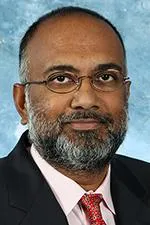
Easo George
University of Tennessee/ORNL Governor’s Chair, Oak Ridge National Laboratory
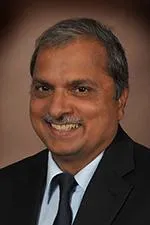
Vivek Sample
Technical Consultant, Arconic Technology Center

Peter K. Liaw
Professor and Ivan Racheff Chair of Excellence, Department of Materials Science and Engineering, The University of Tennessee, Knoxville
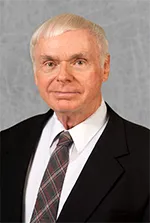
Carl Koch
Kobe Steel Distinguished Professor, Materials Science and Engineering Department, North Carolina State University

C. Cem Tasan
Thomas B. King Career Development Professor of Metallurgy, MIT
Overview/Motivation
High Entropy alloys (or HEAs) are a type of multi-principal element alloy (MPEA) that have 5 or more alloying elements in roughly equal proportion, with a minimum threshold of entropy. MPEAs are a broader class of special alloys where the number of alloying elements in roughly equal proportion is more flexibly defined, and there is no requirement on the alloy’s entropy. This broader class is also sometimes referred to as Complex Concentrated Alloys (CCAs). This workshop will address all types of MPEAs, including the subset of HEAs. Such advanced alloys have applications in light-weighting, high-temperature environments (e.g. turbines), catalysts, coatings, magnetics, rare-earth replacement, and a range of other areas that require extraordinary material properties, unique combinations of properties, or seek to reduce the use of costly materials. The near-infinite permutations of elements offers metallurgists the potential ability to design targeted alloys with specifically desired combinations of properties and ultra-high performance. Yet manufacturing these advanced alloys at scale has proven to be a substantial barrier to realizing their potential. Challenges range from alloy discovery & development to melting, casting, deposition, and application. We hosted the High Entropy Alloy Manufacturing Workshop to detail barriers to the translation of high entropy alloys from the research lab to the factory, identify solutions to these barriers, and lay out actionable next steps to realize the solutions. Findings will be disseminated through a formal report and policy briefs addressed primarily to public sector stakeholders. Event contact: [email protected]

Workshop Agenda
A VISIONING WORKSHOP ON
MANUFACTURING HIGH ENTROPY ALLOYS
DECEMBER 7, 2017 WASHINGTON, DC
THURSDAY, DECEMBER 7
07:30 AM
Breakfast/Check-in
08:00 AM
Welcome & Introductions
08:30 AM
Meeting Focus & Scope
08:45 AM
Keynote: Daniel Miracle, Senior Scientist, Air Force Research Laboratory, Materials and Manufacturing Directorate
09:15 AM
Break
09:30 AM
Breakout Session 1 : Identify Key Challenges (Identification, Modeling, and Manufacturing) Alloy discovery & development 1 Alloy discovery & development 2 Melting, casting, and forming Additive, powder, and emerging manufacturing
10:30 AM
Break
10:45 AM
Breakout Session 2: Identify Key Challenges (Alloys and Applications) High-temperature 1 High-temperature 2 Light-weighting Functional and emerging areas
11:45 PM
Lunch and Networking01:00 PMReport Outs and Group Discussion
01:45 PM
Overview of Actionable Recommendations
02:00 PM
Breakout Session: Solutions and Recommendations
04:00 PM
Break
04:15 PM
Group Discussion of Key Actionable Items
05:00 PM
Networking Reception
Contributors
Jay Tiley, Senior Materials Engineer – AFOSR
Dan Miracle, Senior Scientist – AFRL
Iver Anderson, Senior Metallurgist – Ames Laboratory
Ryan Ott, Scientist – Ames Laboratory
Vivek Sample, Technical Consultant – Arconic
Cagatay Yanar, Sr. Manager, Materials Development – Arconic
John Foltz – ATI/ Specialty Alloys
John Lewandowski, Arthur P Armington Professor of Engineering II – Case Western Reserve University
Bryce Meredig – Citrine Informatics
Douglas Ramsey, Vice President – Citrine Informatics
Fan Zhang, CEO & President – Computherm, LLC.
David Forrest, Technology Manager – DOE AMO
Ugi Otgonbaatar, Corporate Strategy Analyst – Exelon
Howie Jin, Senior Research Associate – ExxonMobil
Jeremy Schaffer, Director of Research and Development – Fort Wayne Metals
Doug Konitzer — General Electric
François Dary, VP, Global Research & Development – HC Starck
David Smathers, Applications Engineer – Fellow – HC Starck
Jeroen van Duren, Director, Customer Enablement – Intermolecular
Duane Johnson, Professor & Chief Scientist Ames – Iowa State and Ames Lab
Aurélien Perron, Staff Scientist – Lawrence Livermore National Laboratory
Scott McCall, Group Leader, Actinides and Lanthanides Science Group – Lawrence Livermore National Laboratory
Patrice Turchi, Senior Scientist – Lawrence Livermore National Laboratory
Michael Krein, Sr. Member, Engineering Staff – Lockheed Martin
Suraj Rawal, Technical Fellow – Lockheed Martin Space Systems Company
Francisco Gonzalez, Product Innovation Coordinator – Metalsa / Commercial Vehicles Technology
Cem Tasan, Professor – MIT
Briggs White, Crosscutting Technology Manager – NETL
Paul Jablonski, Metallurgist – NETL
Ursula Kattner, Physical Scientist – NISTEric Lass, Materials Research Engineer – NISTFan Zhang, Physicist – NIST
Carl Koch, Kobe Steel Distinguished Professor – North Carolina State University
Douglas Irving, Associate Professor – North Carolina State University
Orlando Rios, Research Staff-Materials Science & Technology Division – Oak Ridge National Laboratory
Easo George, ORNL-UT Governor’s Chair – Oak Ridge National Laboratory, UT Knoxville
Eric Wuchina, Program Officer – Office of Naval Research
Louis Santodonato, Neutron Imaging Instrument Scientist – Oak Ridge National Laboratory
James Saal, Manager of Technology – QuesTek Innovations LLC
Mary Lee Gambone, Head of Materials Engineering – Rolls-Royce Corporation
Sarwan Mannan, Senior Product and Application Development Engineer – Special Metals
Alan Luo, Professor – The Ohio State University
Tresa Pollock – UC Santa Barbara
Peter Liaw, Professor – University of Tennessee, KnoxvilleJim Cotton, Technical Fellow – Boeing
Jim Hu, Materials Science Engineer – Honda Research and Development
Michael Gao, Principal Materials Scientist – National Energy Technology Laboratory
MForesight’s work was supported by the National Science Foundation from 2015 to 2020 under Grant No. 1552534 to the University of Michigan (Dr. Sridhar Kota).
Please note that any opinions, findings, and conclusions or recommendations expressed on this website do not necessarily reflect the views of the National Science Foundation or the University of Michigan.

